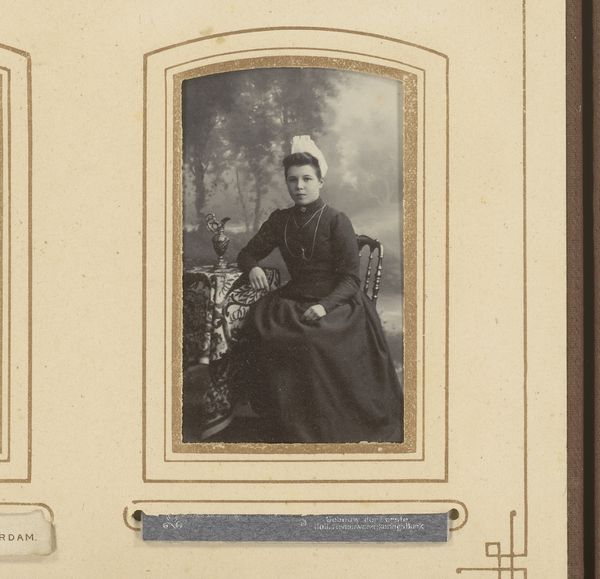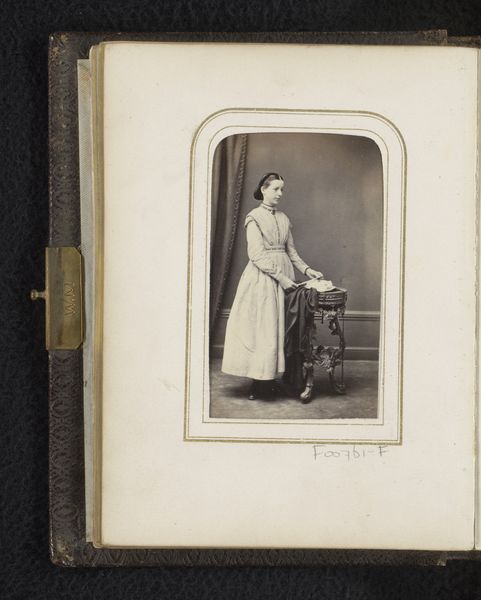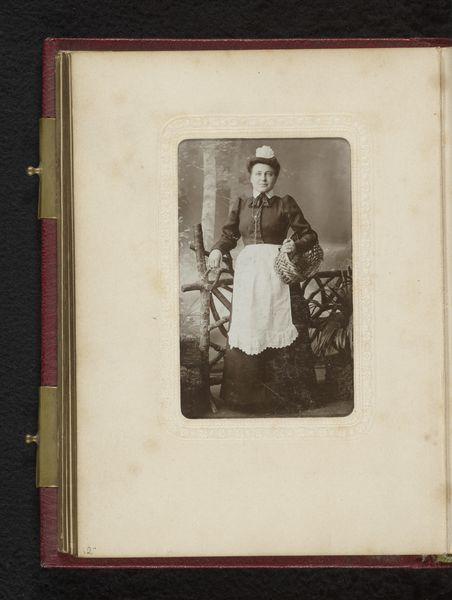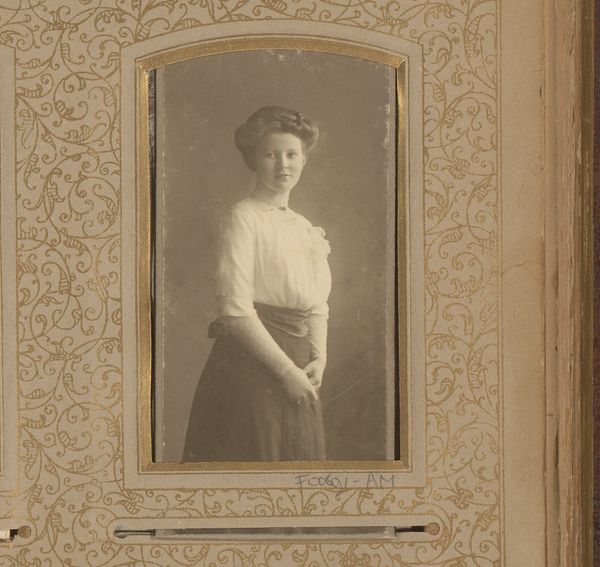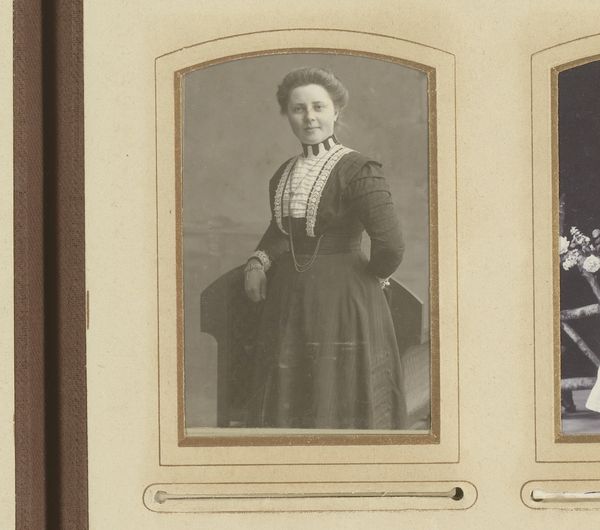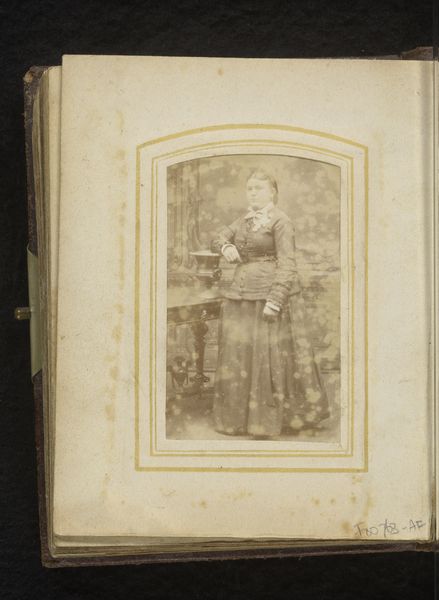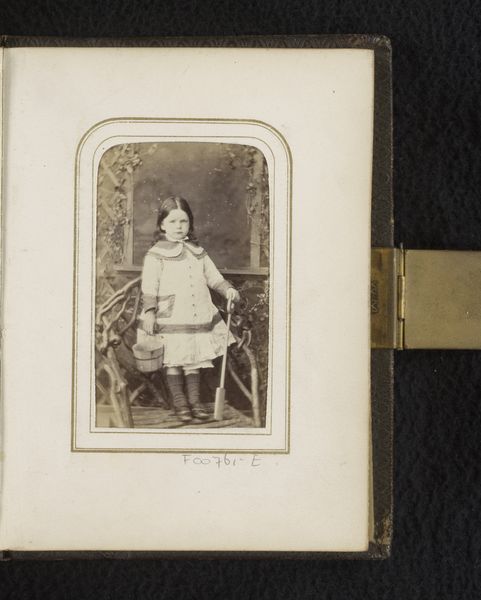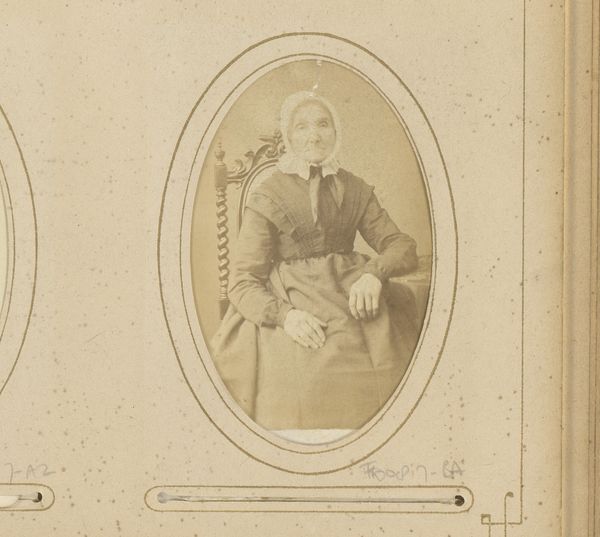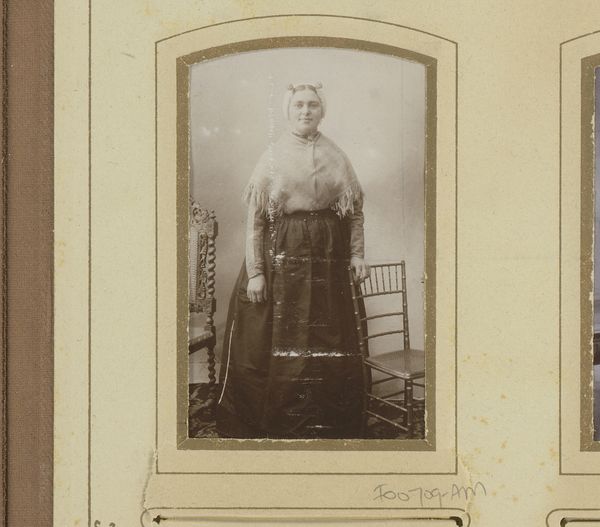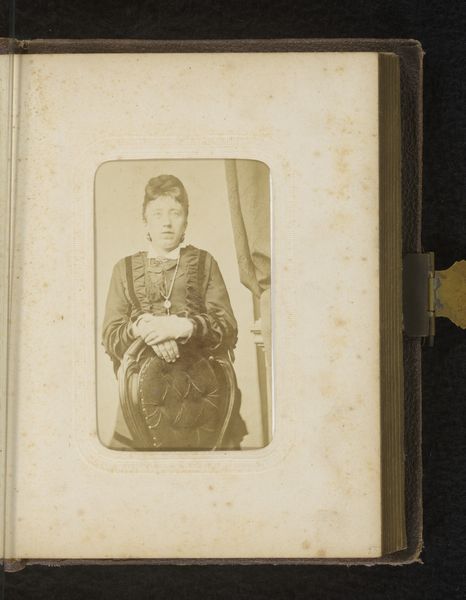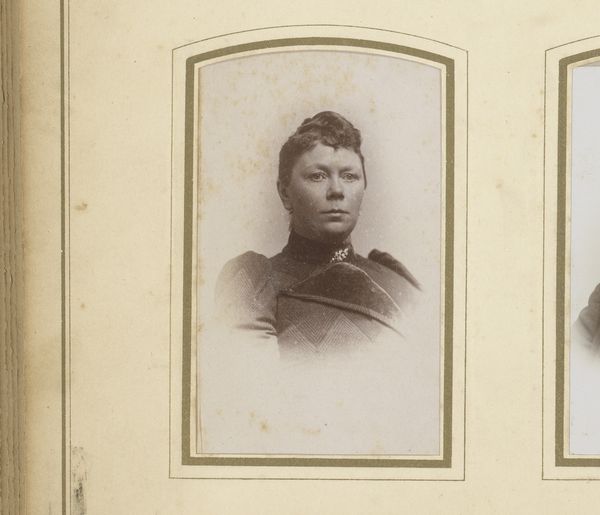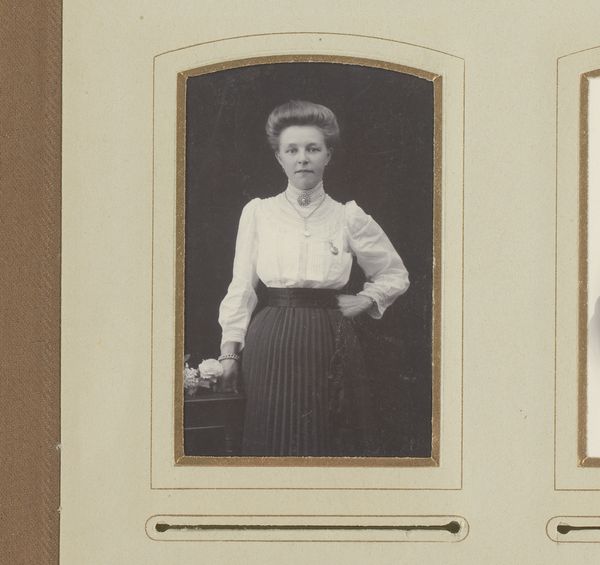
photography
#
portrait
#
photography
#
genre-painting
Dimensions: height 84 mm, width 51 mm
Copyright: Rijks Museum: Open Domain
Curator: Welcome. Today, we’ll explore “Portret van een meisje, staand bij een hek,” or “Portrait of a Girl Standing by a Fence,” an anonymous photographic work created between 1881 and 1903. It’s part of the Rijksmuseum collection. Editor: The subdued tones give this photograph a pensive quality, wouldn’t you agree? The fence offers a strong compositional element, dividing the frame vertically while offering linear patterns. Curator: Yes, the photograph’s sepia tones, combined with the subject’s dress, position the work within its time period. Consider also how the fence is constructed, a seemingly simple structure but providing access to labor that reveals more about the world that is represented within the picture. The availability of the material, the handcraft in constructing this barrier, as well as her presentation close to it opens this picture up. Editor: But within its constraints, this work employs compelling methods to isolate and present the figure, as if offering it for analysis. The background itself, blurred and nondescript, allows viewers to bring our ideas of beauty, of the female, to the figure as if into a mirror. The young lady is separated by this barrier and invites our gaze. Curator: I think isolating her removes the real and material concerns that would normally accompany thinking about labor of both creating her attire or making a backdrop to memorialize someone. Editor: But doesn't that create space to imbue it with something else? The portrait as a process allowed the sitter some measure of control over her image. Look closely, and it’s there in her composed pose. Her control offers a measure of subversion to traditional tropes, where beauty can be controlled, captured. Curator: That is, of course, only one reading. I argue for consideration of production and historical forces shaping lives like hers in a given frame. Understanding photography from this period situates her within evolving roles for women in social and economic fabrics. Editor: A fascinating debate, indeed. Examining elements together helps me perceive historical conditions.
Comments
No comments
Be the first to comment and join the conversation on the ultimate creative platform.
